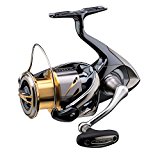European Bass Deep Water Fishing Facts and Information
Winter weather conditions offer more wind and precipitation, especially in early winter.
The adult European Bass can be found in water as deep as 330 feet (100 metres), especially on wrecks, but also in shallow estuaries, harbours, bays and even into freshwater rivers on occasion. Spawning takes place between February and April over deep ofshore water; with the exception of land-locked varieties. The eggs drift on the currents for a few weeks before hatching into planktonic larvae, which then drift towards the coast as they grow in the estuaries and bays of western Europe.
In winter, European Bass move into deeper water, more so than any other time during the year, which is when deepwater fishing techniques are more commonly used. However, the young bass stay close inshore until they are around 14 inches in length, which is about four years old. In their fifth year, they move into wider coastal areas for a year or so, schooling together before becoming fully mature at the beginning of year six, almost half way through their life.
Weather
Winter weather conditions offer more wind and precipitation, especially in early winter. Stormy conditions, stir up the sea bed and reveal crustaceans and other food that the European Bass feed on but it also creates hazardous conditions in the North Altantic and must be respected. However, these weather condition are believed to create the right water conditions to stir up their appetite. The opposite can be said for a calm clear weather.
Location
In late fall and winter, European Bass are found in upper layer schools of mackerel, sprat, pilchard and scad. Locating schools of these fish can often lead to the discovery of European Bass. Not much is known how bass react to fish of its own size, but when it faces prey of a lesser size, it attacks ferociously.
The best place to find European bass is in the deeper water where the water is less turbulant and in and around reefs, sunken debris and shipwrecks. This use of sonar is highly recommended for these conditions. If you are new to this type of fishing, a guide or an experienced mate is highly recommended.
Lures
The right bait and the right size of bait will increase the probability of a great and exciting day out. The last thing you want is to be picking up prey fish.
Try cutting squid into strips of four inches and attach them to a snelled hook. A length of squid should be left hanging from the hook like a tail.
Flashing
A good way to spot them is via flashing. Sometimes they turn on one side and appear to rub one flank on the bottom, which is there to remove parasites or to disturb crustaceans. From the surface this appears as a flash, giving away their position.


